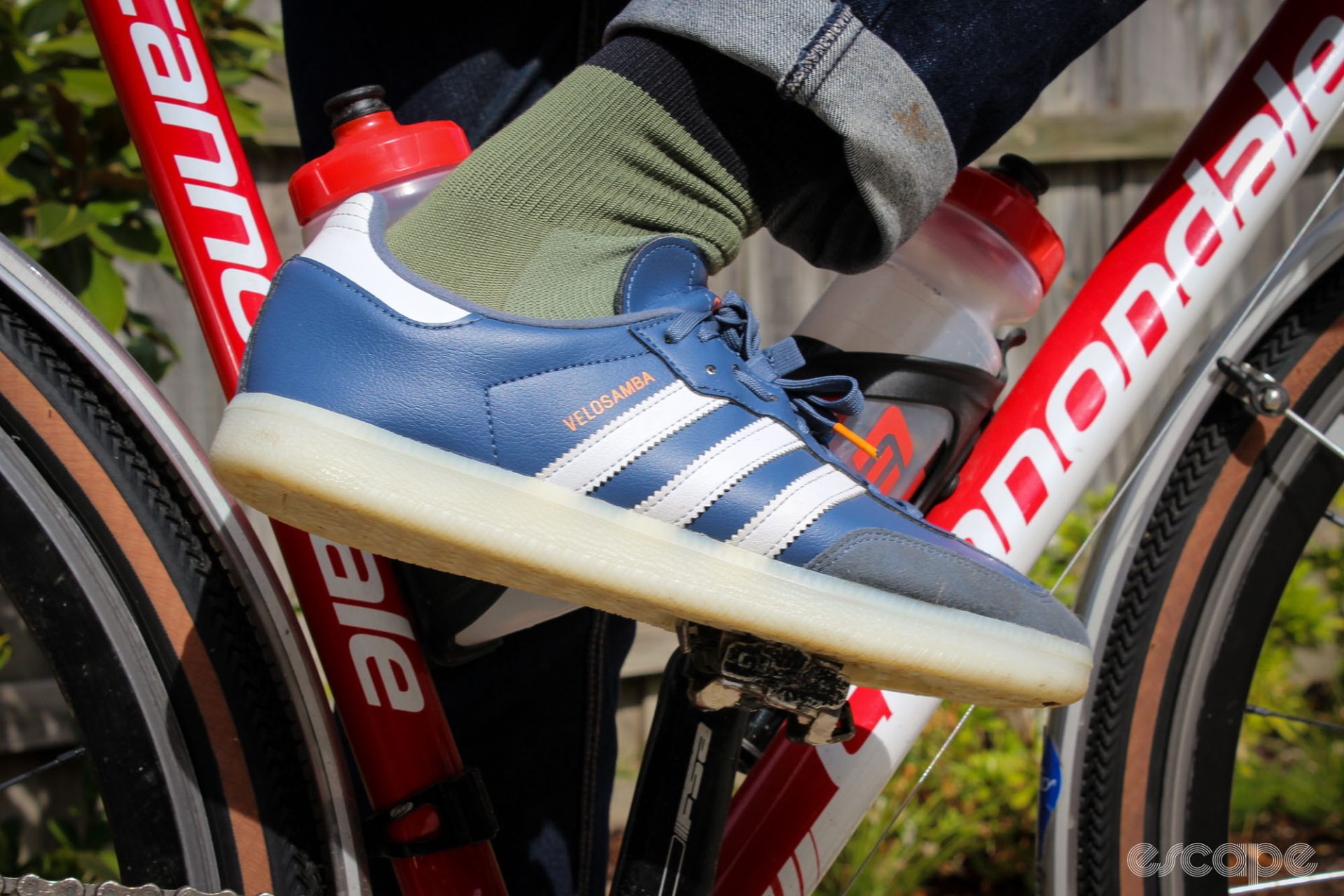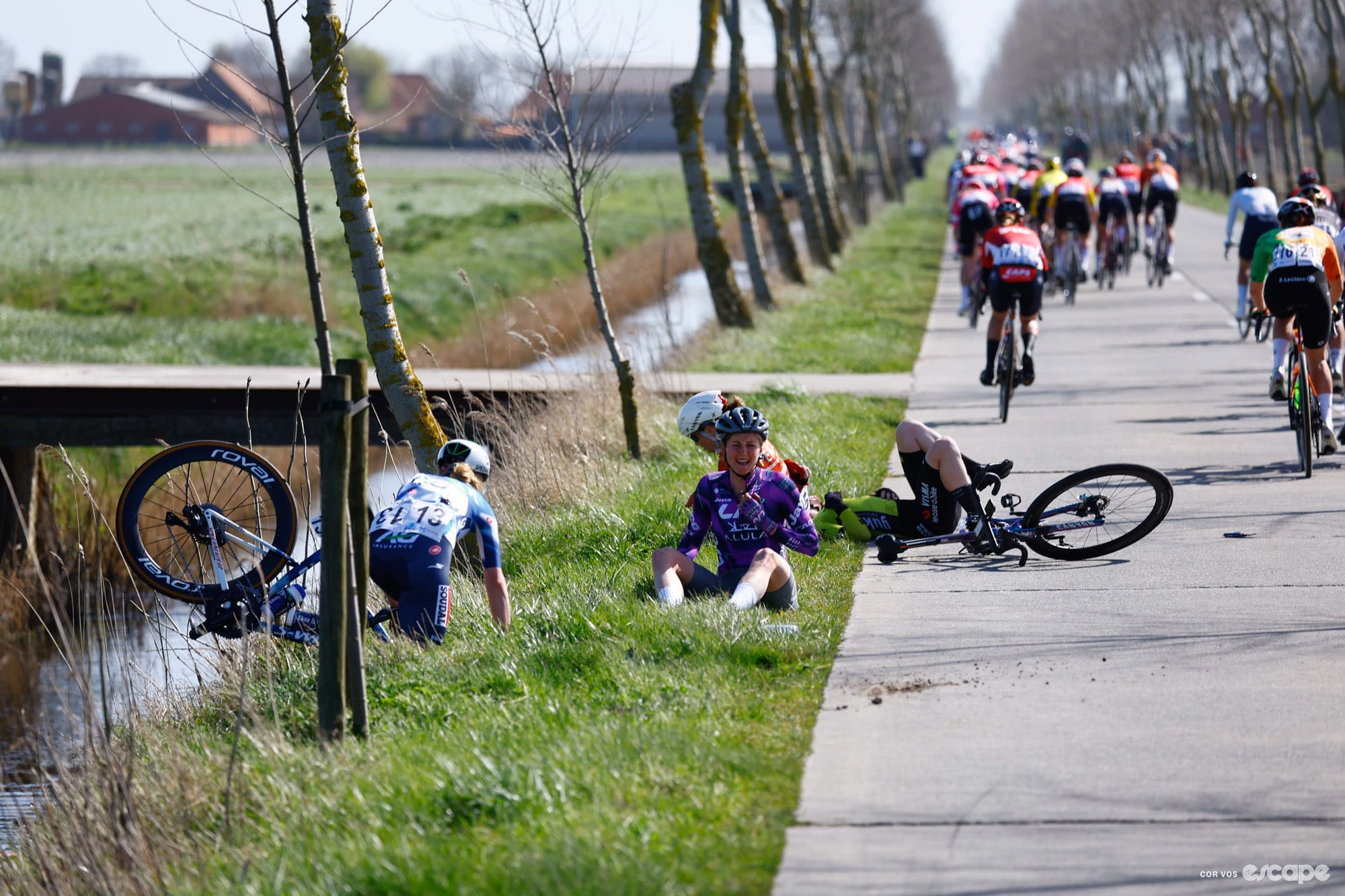The casual bike shoe is a tough nut to crack. Most major cycling footwear brands have a model or two that blur the lines between sport and leisure, but they’re all too often aesthetically challenged – velcro straps and technical fabrics, boxy shapes and drab colour schemes. All very sensible, but sometimes you want a shoe that doesn’t look like you’re going hiking or to spin class.
There are a few brands – the likes of DZR, Chrome, and Quoc – that have made urban shoes that look more discreet off the bike and have a more youthful aesthetic, but in my experiences with each of them, they haven’t been unqualified successes. So when Adidas announced the Velosamba, an SPD-equipped adaptation of the German brand’s iconic sneaker, I was cautiously optimistic.

A quick history lesson
The Samba has been part of Adidas’s range since 1949, initially introduced as an indoor soccer shoe and one of the first models featuring those three distinctive stripes down the side. By the 1980s, the Samba had been co-opted by soccer’s fanbase as a casualwear staple. Other models with a similar silhouette have followed in its wake – the Gazelle, the Spezial, the Campus – but the Samba’s popularity has been particularly enduring. With well over 35 million sales worldwide, it is apparently the company’s second-best-selling model of all time.
Simultaneously, Adidas’s fortunes as a cycling brand have risen and fallen. Eddy Merckx made its road cycling shoes an object of desire in the 1970s, wearing a white-striped black model to the Hour Record and many of his most famous victories. By the 1990s, Adidas was sponsoring Team Telekom, supplying kit as well as sunglasses and shoes to the likes of Jan Ullrich. But by the time the doping bubble burst and public sentiment in Germany soured on cycling, Adidas had seen enough. The company stepped away from cycling until a brief sponsorship of Team Sky a decade later, and – until a few years ago – has maintained only a minimal presence in the road-leaning side of the sport. [A notable exception to this is the fact Adidas owns Five Ten, the market-leader in gravity disciplines of mountain biking.]
Then came a sudden influx of fresh investment in the sport by the sportswear titan – not at the elite racing level, but in support of a consumer boom in cycling. There was a Merckx-referential lace-up road shoe; there was a neoprene cuffed gravel shoe; there were strapless bib shorts (yeah, I’m still confused by that one, too). But the one that really got people going was the Velosamba, released in early 2021.
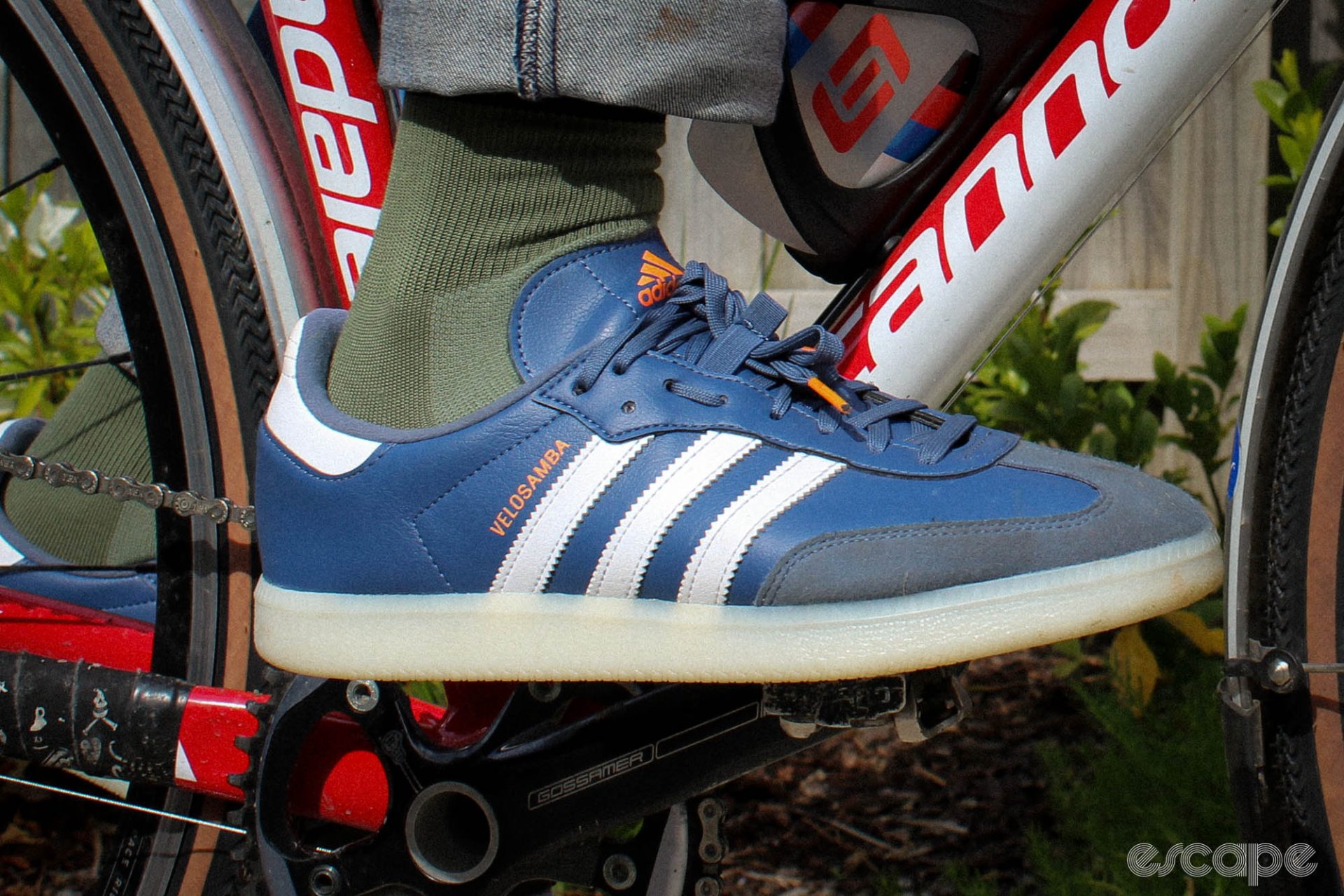
In the time since then, Adidas has released a few different variants. The original Velosamba featured a leather upper. This was followed by a vegan variant (as reviewed here), which retails at AU$220/US$130/€NA/£NA. There’s a mostly-fabric-upper version, known in some markets as ‘Velosamba Made with Nature’ (€140/£120) and in others simply as ‘Velosamba’ (AU$220/US$NA). Some countries – not Australia – also get an insulated ‘Cold.Rdy’ variant (€140/£130), and complicating matters further, there are different naming conventions and colour availability depending on market. They're not cheap, but they're not unreasonably costly either – and only about 20% more expensive than a standard Samba.
Long story short: with Adidas’s wide availability globally, there’s likely to be a Velosamba option for you, even if it's confusing to figure out which one. But do you want them?
Some backstory: in mid-2022, I reached out to Adidas (way back at The Old Place) for a review sample. They sent me a pair that didn’t fit. I asked for another pair that I might actually be able to get my feet into. They never got back to me, so I bought a bigger pair for myself at retail price, and have been using them for almost a year. The blue ones are the one I've tested, the black ones are the ones I haven't.
How are they?
The Velosamba looks very similar to the Samba, with only a few tells that it’s a different beast. The first: it says ‘Velosamba’ on it. The second: it’s a slightly bulkier profile, with a touch more padding around the heel. The third: there is an elasticated loop for laces to tuck into, with some extra eyelets around the ankle to secure a snug fit.
The sole is where the real bike-centric stuff kicks in. Nestled in a cut-out is a two-bolt cleat fitting, with ample adjustment to get the cleat a few centimetres behind the ball of the foot (mid-foot cleat enthusiasts, look elsewhere). There’s a rubber sole that’s more than grippy enough for urban use, and there’s a full-length nylon midsole with a reasonable amount of flex in it for walking.
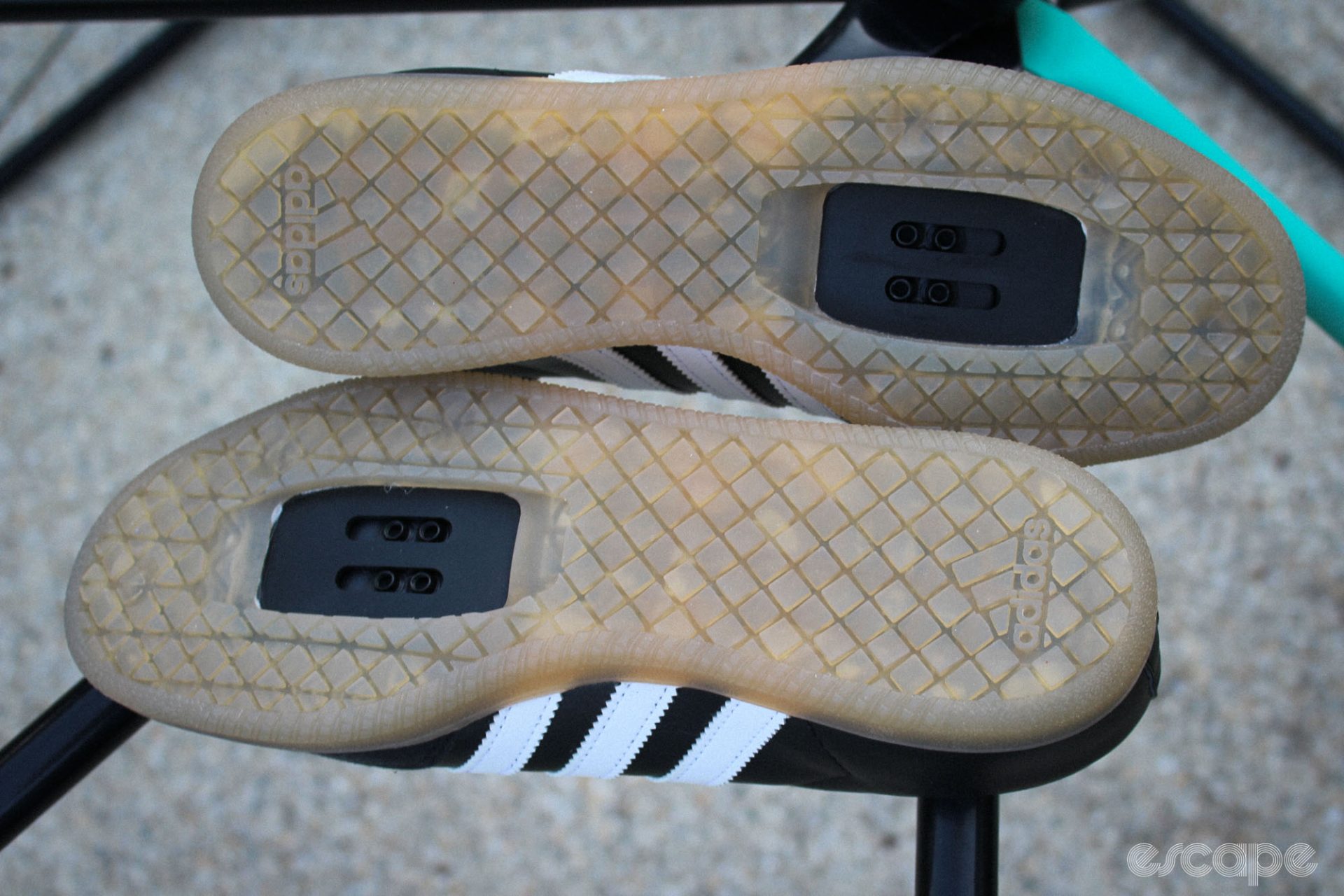
Compared to competitor shoes I’ve used from the likes of Chrome and DZR, these are by some margin the most comfortable to spend a day in. They also look the most ‘normal’ – a look that can be styled up for work, that blends in at the pub, and that functions well enough to not be a devastating compromise for the commute. My typical use of the Velosambas tends to be an hour-long ride each way to meet friends for a ride or a beer, only finding the limits of my feet’s comfort after several hours standing at a gig. That’s a pretty decent outcome.
There are some quirks to be mindful of, though.
First of all: the fit. I find Adidas frustratingly inconsistent in this regard across the board; what is normally my size 42.5/43 in any other brand can be anything from a 41 to a 43.5 in the three stripes. My first attempt at the Velosamba was US 9 (42 ⅔), which turned out to be extremely tight, not just in width but also length. The Vegan upper, Adidas confirmed, would offer a little stretch but not as much as a natural leather, and with my feet going numb just sitting at the desk I realised this wasn’t going to do it for me. After communications with Adidas went cold – and then The Old Place went south – I eventually just bought at retail a US 10 (44). They're a full size bigger than I would normally consider.

I don’t think of my foot as particularly broad or high volume, and feel most comfortable in cycling shoes that are considered narrow-fitting; the likes of Giro and Rapha. Upsizing to a 44 got me the width I needed and allowed enough toe-room for comfortable walking – there’s more back and forth movement in street shoes compared to the locked-in position on a pedal – but the fact remains that the fit of the Velosamba seems like a profound outlier. Compounding this fact is the inconsistency within Adidas’s own messaging on sizing in different markets; the UK website advises sizing up half a size, while the Australian website just claims it’s a ‘regular fit’ (I would argue it is the opposite). I’d highly recommend trying them before buying them, if you can, or ordering a couple of sizes and returning one. (Adidas has free returns, although that’s not without an environmental toll.)
Speaking of which: Adidas talks a pretty good game about the environment, with a targeted goal of 90% sustainable product by 2025. The vegan variant of the Velosamba uses 25% recycled plastic; the ‘Made with Nature’ variant is more than 50% natural and renewable. Elsewhere in the Adidas cycling range there are products made with recycled ocean plastic, and by next year the company is targeting 100% recycled polyester.
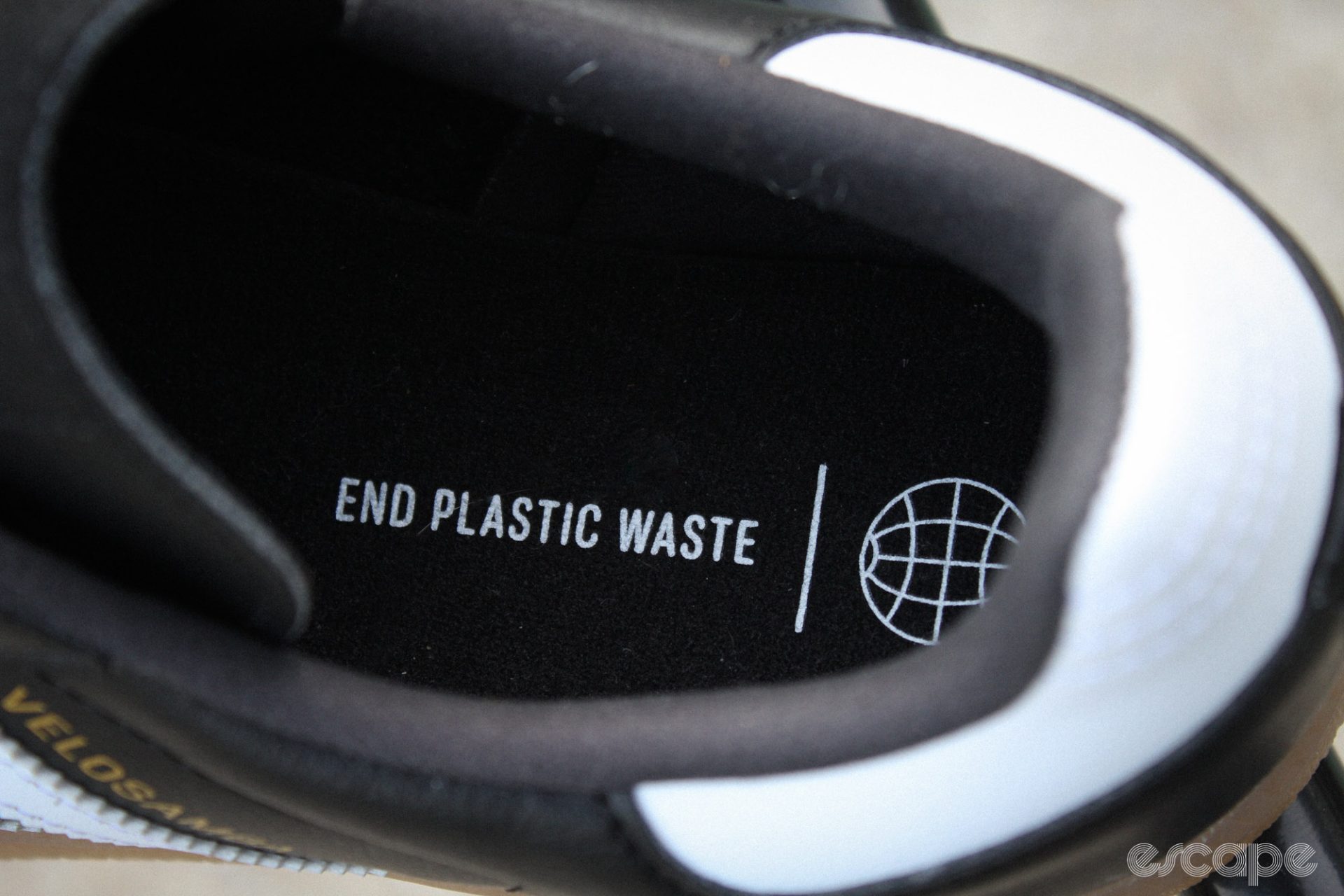
On the road
That environmental savvy is promising, but for a product to be truly environmentally friendly it also needs to function well and last a long time.
In the latter regard the durability of the Velosambas has, happily, been pretty impressive. Any wear to the outsole is negligible; the recessed cleat is still noiselessly recessed after a year. The vegan upper is easy to wipe clean (and apparently has an unspecified water-resistant treatment on it), although the synthetic suede section on the toe is more susceptible to grime and grease. Over time the red branding on my blue shoes has faded to a burnt orange from UV exposure, but I have every reason to believe that they’ll stay in service for a couple of years to come.
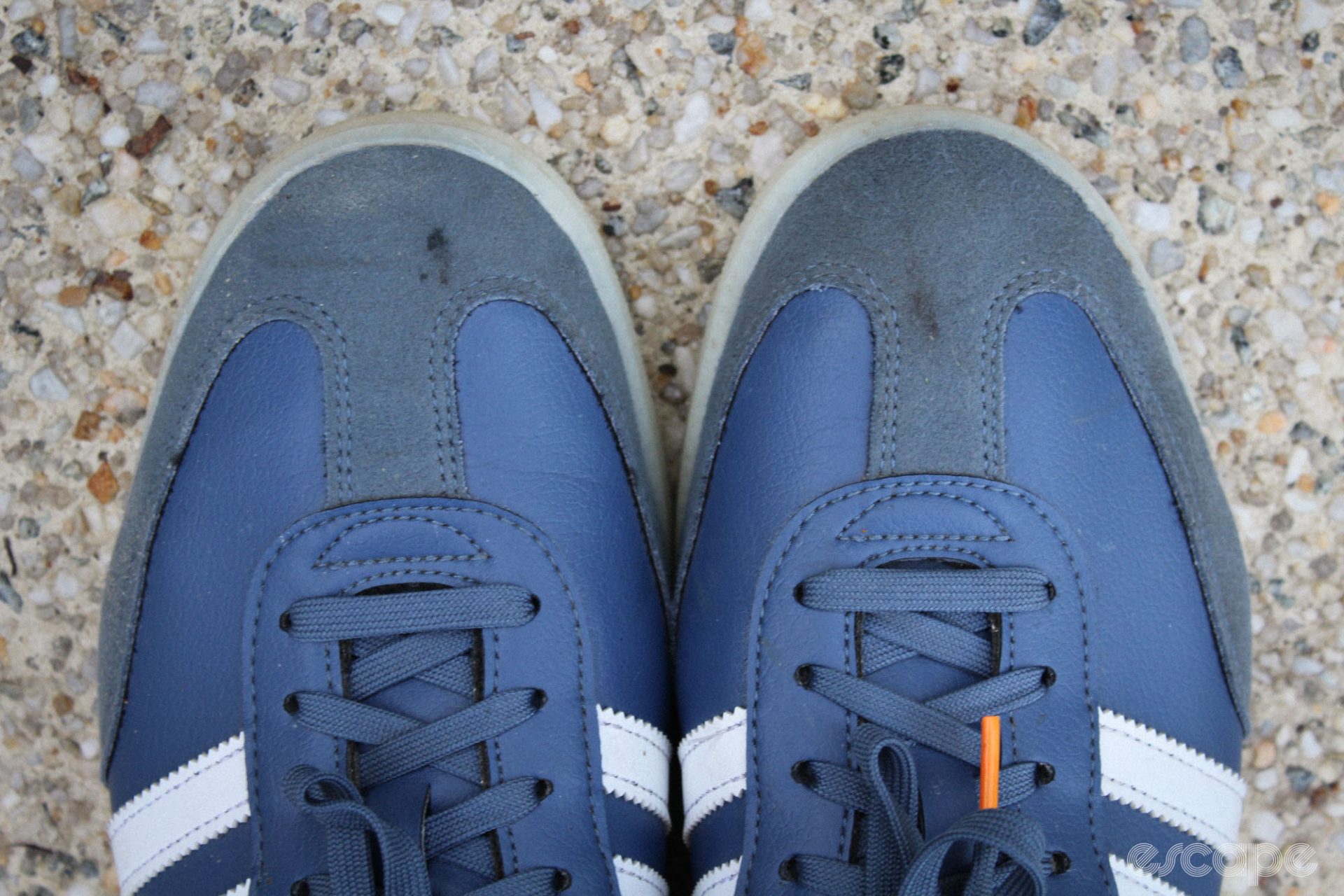
Assessing their function is a more complex task. What do we compare these to? A mountain bike shoe? A pair of street shoes? A little bit of both? Let’s try to thread that needle.
The pedalling performance of them is solid, if not particularly remarkable. There’s no discernible flex when clipped in, but there’s not the feeling of zip that you get with a full carbon-soled shoe either. I’ve used them on my gravel bike and mountain bike occasionally, but mostly they’ve served their noble duty on my crusty, trusty old CAADX commuter (still shreds!) in ‘normal’ clothes, and in that application they’re a good match.
There’s a smidge more toe overlap to be mindful of, especially as you’re likely to size up slightly to give your feet room when walking around to avoid slamming into the end of the toebox. Compared to more technical shoes there’s also simultaneously less structure to the upper and insole, and more padding around the ankle. For me, that meant there was a little crank rub on the Velosambas.
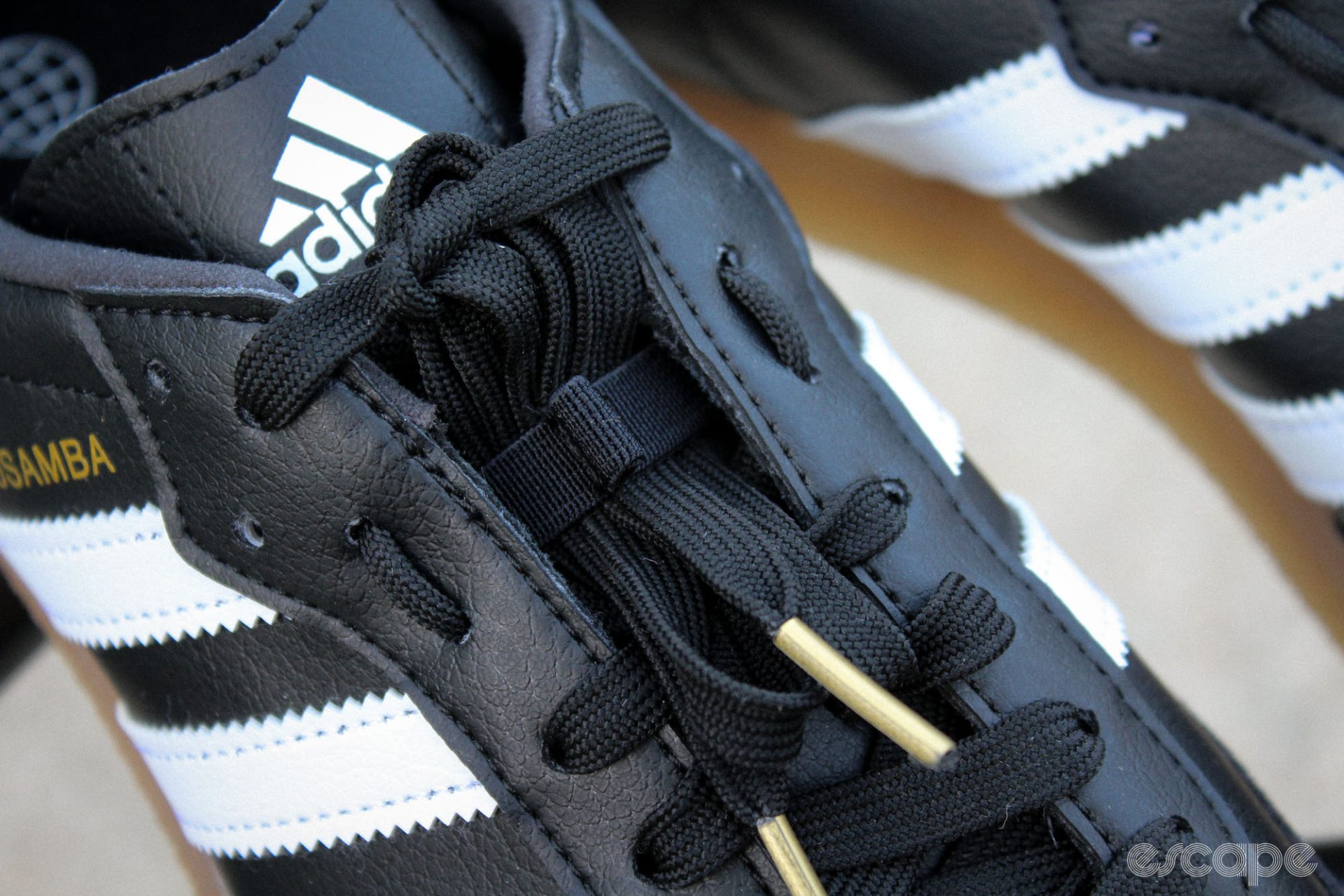
The lacing, meanwhile, is routed in a way that keeps a good hold on the bottom half of the foot and allows you to lock down discrete sections of the foot. There’s little in the way of heel hold in the structure of the shoe, so for a firm fit you need the laces to be fairly tight as they approach the ankle to eliminate movement. In an ideal world I’d like a bit more padding (or any, really) on the tongue as the pressure from the laces is sometimes noticeable, but we’re getting into minor gripes here.
To complete the minor gripes: the vegan variant at least is fairly warm and lacking in ventilation, although this seems to have been remedied somewhat on the newer cloth model. And finally, there’s no reflective detailing on this particular iteration of the Velosamba, which is a bit of a miss for a shoe designed for the urban jungle. This is something the cloth model has introduced, however, and its presence would admittedly undermine the discreet styling of the vegan Velosamba.
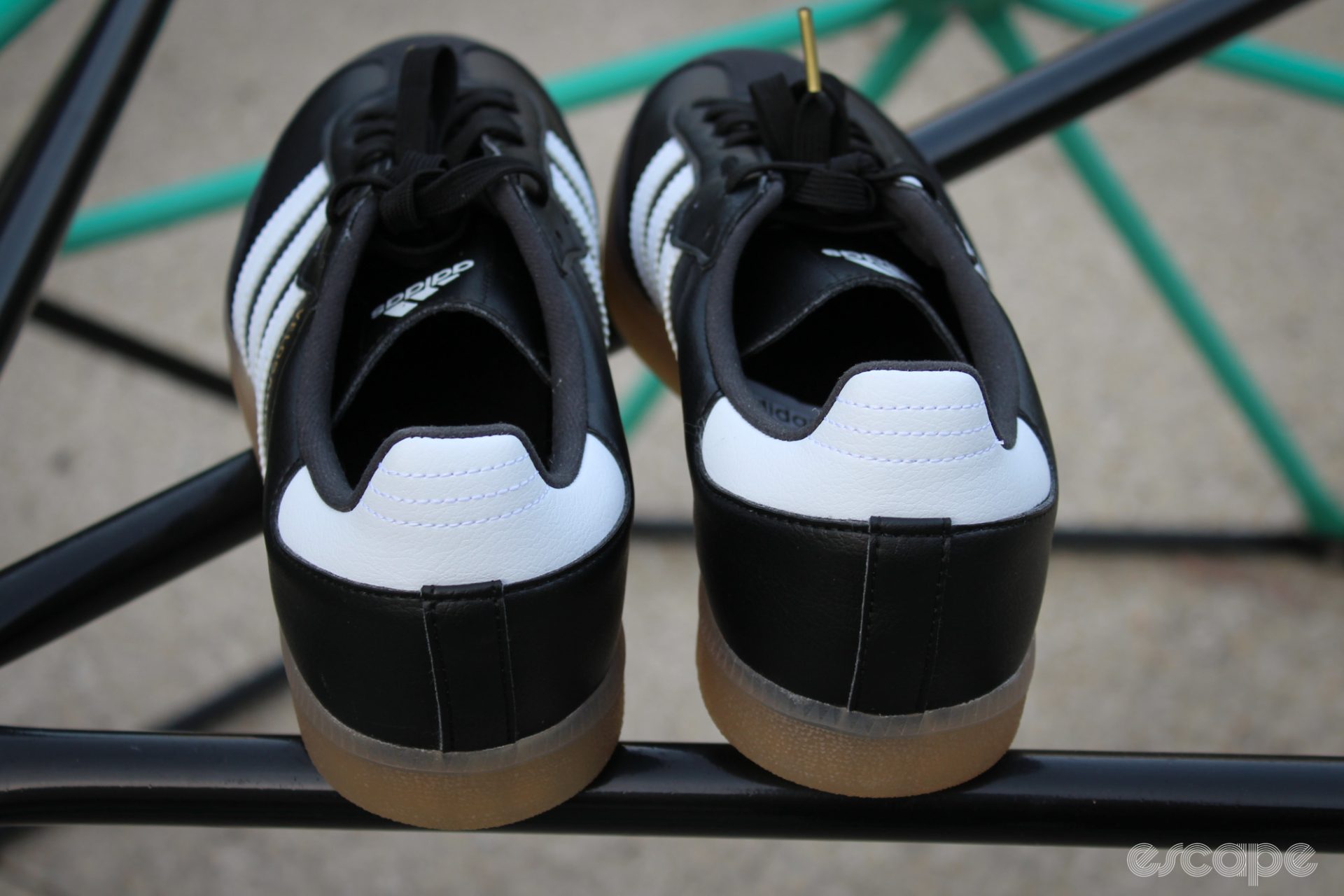
Summing up
So where does that leave us? To recap: there’s a weird fit, the on-bike performance is pretty good if not a revelation, and there are a few other niggles big and small.
Here's the thing, though. I don’t know, really, how much most of those things matter in the end. This is a style of shoe that by design is a compromise between on bike and off. It stands to reason, for me at least, that it might end up being a bit compromised as a result. In my experience, the entire genre is.
On the plus side, the styling is exactly what I would want in a shoe like this – something discreet and stylish that can only be picked out as a bike shoe by the eagle-eyed. It’s comfortable enough and hits the marks that it needs to so well that even with the niggles, it’s hard to see it as less than a success.
Perhaps that’s a triumph of form over function. But I'd argue that – although there's room for improvement – the real triumph is that Adidas has still managed to create the best urban SPD shoes I’ve come across. They're not performance shoes, but they're not built for performance; they're built for riding as part of life. You probably aren't reaching for them for your next gravel epic or multi-day tour, but for a certain utilitarian type of riding – clipped-in but casual, filled with the good things in life on-bike and off – they're hard to look past.
Did we do a good job with this story?

